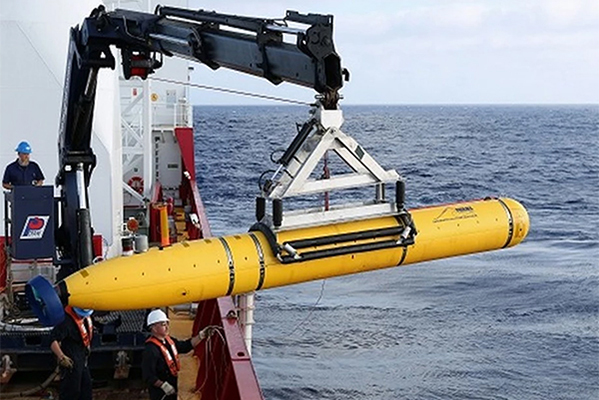China’s announcement, on 13 January, of the delivery of the first autonomous seaborne drone carrier Zhu Hai Yun will unsettle the naval balance of power in the Indian Ocean Region.
“The unmanned carrier can be controlled remotely and navigate autonomously in open water. It will undertake marine scientific research and other observations,” the Global Times reported. Assessments here suggest the drone carrier will revolutionise the PLA Navy capabilities multifold including long range strikes on forces beyond the ranges of conventional weapons.
The Chinese official daily reported that the autonomous drone carrier is capable of operating on its own. The unmanned carrier can be controlled remotely and navigate autonomously in open water. It will undertake marine scientific research and other observations.
The carrier, officially put into use after a year and a half of construction, is the world’s first unmanned system and scientific research ship with autonomous navigation and remote-control functions, and has been awarded the first intelligent ship certificate by the China Classification Society (CCS).
Its power systems, propulsion systems, intelligent systems, power positioning systems and investigation support systems have been independently developed by Chinese research teams, the report claimed.
“This is the first professional sea trial of the Zhu Hai Yun, which aims to test its autonomous navigation performance and the launching of the unmanned craft,” the report quoted Chen Dake, a member of the Chinese Academy of Sciences and director of the Southern Marine Science and Engineering Guangdong Laboratory, as saying.
The ship can carry out comprehensive marine survey tasks such as ocean surveying and mapping, ocean observation, sea patrol and partial survey and sampling, the report claimed.
The primary assessments by Indian experts suggest this drone carrier may be operated remotely and utilised for a variety of tasks, including environmental monitoring, oceanography, maritime security, search and rescue, and more.
Geopolitical analyst Dr Rituraj Mate told The Pioneer, “The carrier enables the remote operator to send and receive data. There are many different payloads installed, such as cameras, sensors, and sampling tools. They can also break through ice and work in bad weather. It may be used for long-term monitoring and research projects in addition to short-term missions like search and rescue operations combined with other nautical vessels, such ships or submarines, to expand their range and capabilities. The carrier is likely to induce more confrontations in the countries in the South China Sea region.”
“Such remotely operated drone carriers will bring more confidentiality to the Navies and also decrease human involvement and expenditure enabling that nation to use the same resources in other areas. The chances of the accidents will also decrease,” Dr Mate said.
Introduction of the drone carrier will enhance the PLA Navy’s capacity and capability in a variety of ways, including through increased battlefield awareness, detailed and real-time view of the battlefield with the help of modern sensors and cameras, he added.
This is likely to enhance naval electronic warfare gadgetries by regional navies.
Trainee defence analyst at security research firm Kawach, Sai Priya Arukonda said the latest addition to the Chinese PLA Navy will give a straightforward edge in combat and it can restrict access to enemy soldiers, discover and track submarines as well as being able to quickly recognize and track enemy forces.
“The drone carrier will improve the situational awareness for the PLA Navy in the region, allowing them to gather and transmit real-time information about Indian Navy forces and the surrounding areas in IOR. The launch of the drone carrier will propel the Chinese navy to attempt and create anti-access and anti-denial zones for the regional navies,” Arukonda added.


















